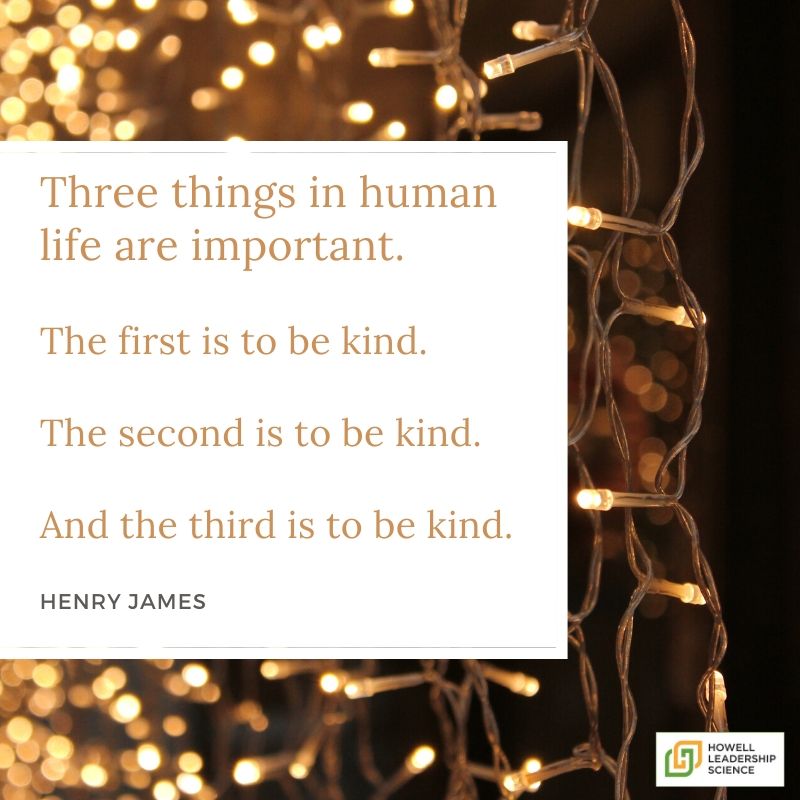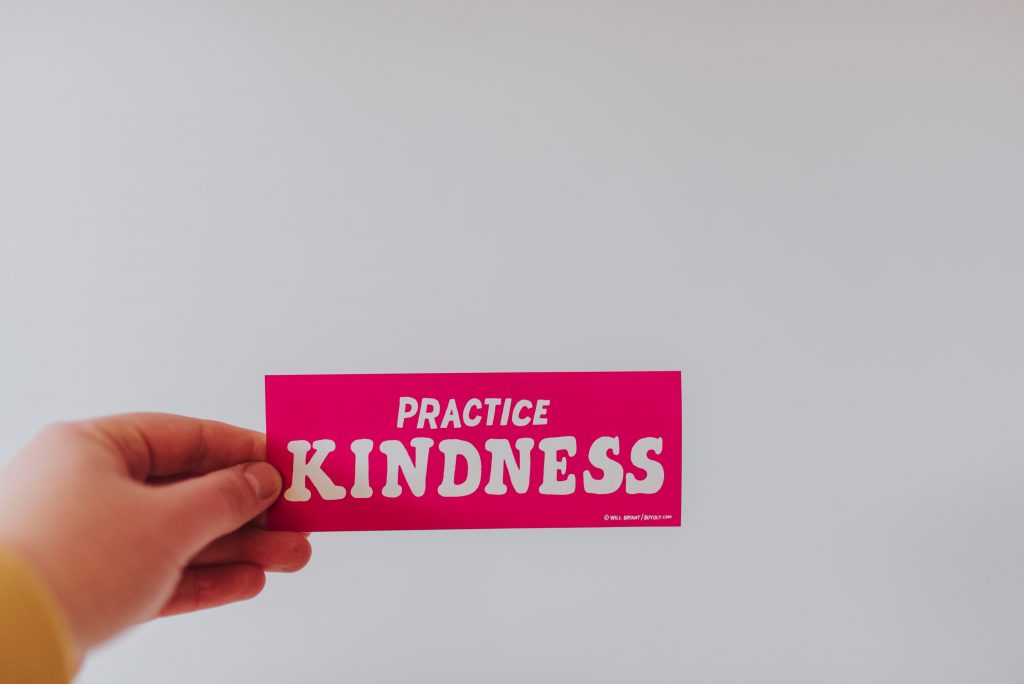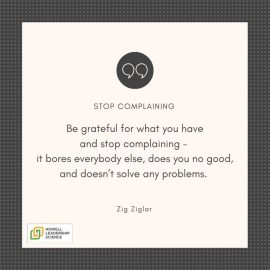Invest 5 minutes a day to create a better workplace

Welcome to Week 6, the final week, of your Kindness Experiment. In this week, you will face the most challenging part of the experiment – curbing your judgmental thinking.
Overview of your Kindness Experiment
The Kindness Experiment introduces simple changes you can try at work to create more kindness and improve your working life.
In Week 1 you refreshed common courtesy. In Week 2 you focused on tone of voice and body language. Week 3 you followed the mantra to stop complaining.
In Week 4, you worked on being inclusive! Week 5 went deep into thinking about how to frame relationships at work by letting go of hierarchy.
Now, in Week 6, you’ll work on curbing judgmental thinking.
This experience provides a chance to slow down, be intentional, flex your kindness muscles and notice the impact of your actions.
For six weeks, practice these easy kindness actions and see how they change your relationships, performance and personal mood.
Report back in the comments or on Twitter (@drannhowell), Linked In or email me directly at ann@howlead.com to share your findings.
Principles of your Kindness Experiment
Everyone has their own definition of kindness. I define it as an act that benefits others as an end to itself. One awesome thing about kindness is that it usually multiplies and benefits you as well.
Kindness in the workplace:
- Is not a weakness
- Can co-exist with running a profitable business
- Can be balanced with holding people accountable
- Does not mean you need to stop enforcing rules
- Means giving constructive, and sometimes challenging, feedback to allow employee growth
- Supports you in building a network
Define Judgmental Thinking
Judgmental thinking occurs when people rush to form opinions – usually harsh and critical ones – about people and situations. This negative approach leads to close-minded thinking and often causes destructive and harmful behavior.
Judgmental thinking often occurs within split seconds of seeing a person or watching a situation unfold. Everyone does it – it stems from years of biases and expectations. Although everyone does it, you can still control it.
The key is to recognize your judgmental reactions and consciously turn them positive.
Although judgmental thinking is often directed at other people, we also turn it on ourselves. If you find yourself thinking about how stupid you are or how no one likes you, you are negatively judging yourself.
Curb your negative judgmental thinking about others and about yourself. By turning to positive thinking and actions, you extend kindness and create a more effective and inclusive workplace.
Difference between leadership judgment and judgmental thinking
Judgmental thinking is a different concept than ‘leadership judgment’.
As described in the article ‘Stop looking for the EASY button‘, leadership judgment refers to the ability to make wise and high-quality decisions.
Leaders have a job responsibility to make decisions and solve problems – often with limited and conflicting information. Their ability to leverage leadership judgment helps them act and lead successfully.
Judgmental thinking, on the other hand, highlights the immediate, often negative reactions we have to people and situations. Instead of being focused on decision making, judgmental thinking is simply a negative, evaluative reaction.
Actions for curbing judgmental thinking
For this week, spend 5 minutes a day being conscious of your thoughts and turning them from judgment to acceptance.
Be intentional as you do the actions (your experiment) and notice reactions of others and yourself (your data collection).

Kindness actions for Week 6: Steps to curb judgmental thinking
- Step 1: Notice. Be aware of when you are being judgmental – with colleagues, friends, family and even celebrities. This is the first step. Once you recognize your thoughts, you have the option to change them.
- Step 2: Evaluate. Once you notice a judgmental thought, evaluate it. Is it useful? Is it kind? If not, let it go or re-frame it.
- Step 3: Re-frame. Change negative judgmental thoughts into positive – or at least neutral – thoughts.
Tips for re-framing judgmental thoughts
In Step 3 for curbing judgmental thoughts, you re-frame the thought. What does that mean? How does that work?
Check out these actions that can help you re-frame judgmental thoughts.
Assume positive intent
When you start to judge someone, stop and assume that they have positive intent. Maybe their perspective and needs are different than yours, so they behave differently – but their intent is good.
If you assume that their actions are intended in a positive way, it gives you room to give them the benefit of the doubt. Remember, everyone is trying their best in life.
Interesting choice
I have found the phrase ‘interesting choice’ to be a method for taking negative judgment out of reactions. Instead of judging someone as ‘stupid’ or ‘lazy’ or ‘an as*hole’, react to their action by thinking ‘interesting choice’.
That reaction neutralizes the tone and focuses on the action without cutting down the person.
‘Interesting choice’ also works for self-judgement. If you find yourself saying ‘I am such an idiot’, stop calling yourself names. Replace the thought with ‘interesting choice’ to describe your action. This neutral statement gives you space to really evaluate what happened.
Be kind to yourself. You deserve it.
Find beauty in differences
Everyone brings unique traits, thoughts, personality, background, and experiences to the world. Differences make us interesting and create a vibrant world.
Start looking for differences and appreciating the beauty – and occasional wonderful weirdness – in these differences.
Beauty exists in introverted and extroverted people, a lovely range of skin tones, bodies of all shapes and sizes, personal fashion choices, all ages, all genders and gender identities, the variety of thinking styles, all races and ethnicities and so, so much more.
Where can you find beauty today?
Imagine saying the words
If you find yourself still thinking judgmentally, imagine yourself saying your thoughts directly to the judged person.
If you are not willing to share your thought, the thought is likely a negative judgment without value and is not serving you well.
Work on curbing your judgmental thinking and free yourself from the negativity. Expand your capacity for kindness.
Data Analysis & Conclusion
To analyze the success of your experiment consider these questions.
- Did you try the three steps (Notice, Evaluate, Re-frame) to curb judgmental thinking?
- How often did you catch yourself being judgmental?
- Which of the re-framing tactics did you try? How did they work?
- Did you try to curb judgmental thinking outside work?
- Were you less judgmental and kinder to yourself?
- Did you feel a positive reaction that will encourage you to continue?
Share your results
Please share your conclusions and experience in the comments or email me and let me know how it went! You can reach me at ann@howlead.com.
Weekly themes for your Kindness Experiment
Week 1: Common courtesy
Week 2: Tone and body language
Week 3: Stop complaining
Week 4: Be inclusive
Week 5: Life outside hierarchy
Week 6: Curb judgmental thinking
Link to Kindness resources
Some terrific research and writing have been done regarding kindness – work-related and also more broadly focused.
I provide a deeper look at kindness on this blog in my article On Kindness at Work
The Bedari Kindness Institute at UCLA recently launched to research various elements of kindness. #UCLAKindness
The VIA Institute on Character has a discussion of kindness and includes it in their character assessment.
The Positive Psychology area of psychology does research and interventions related to kindness and similar topics. Find one positive psychology program at the University of Pennsylvania.



